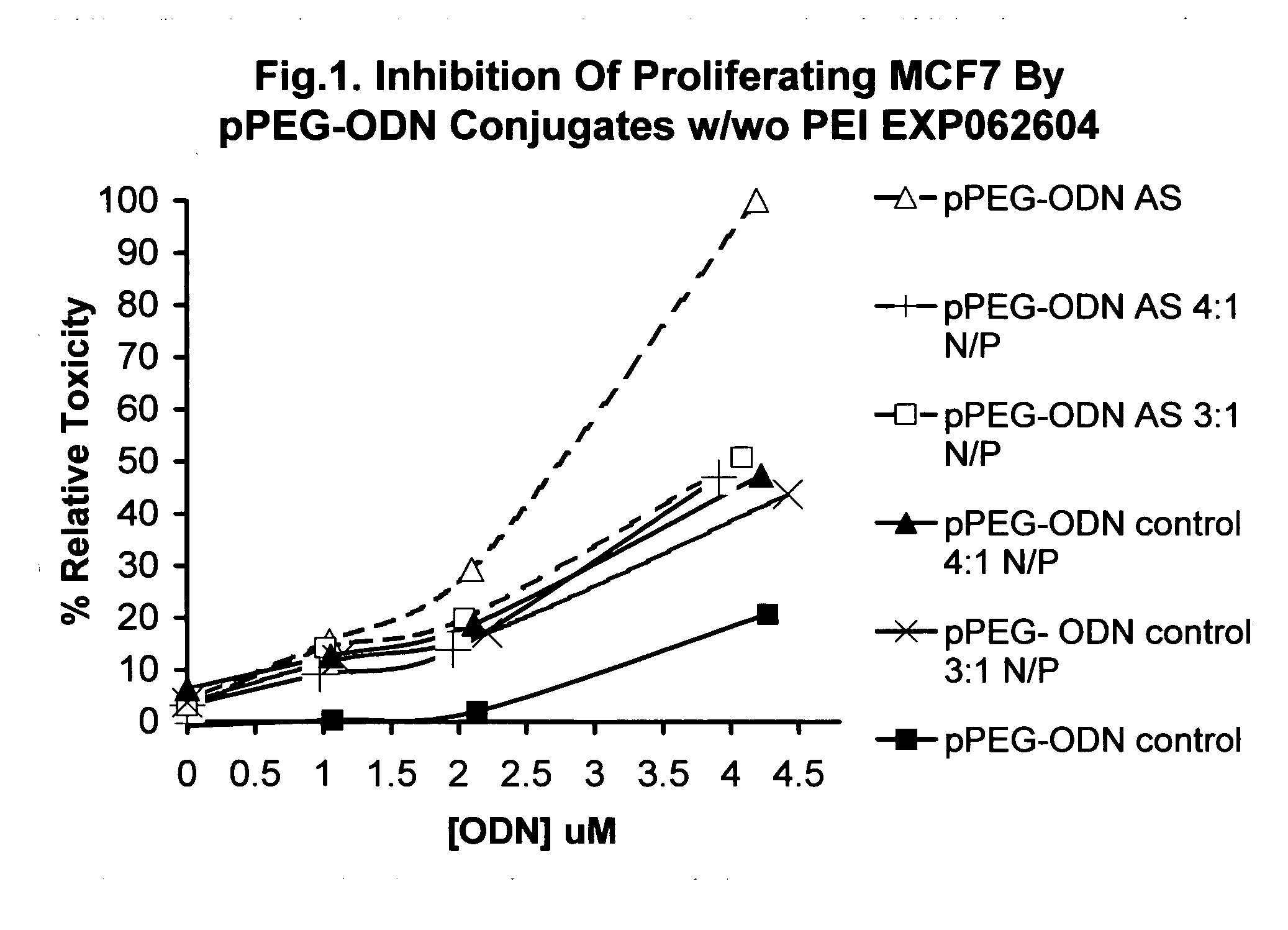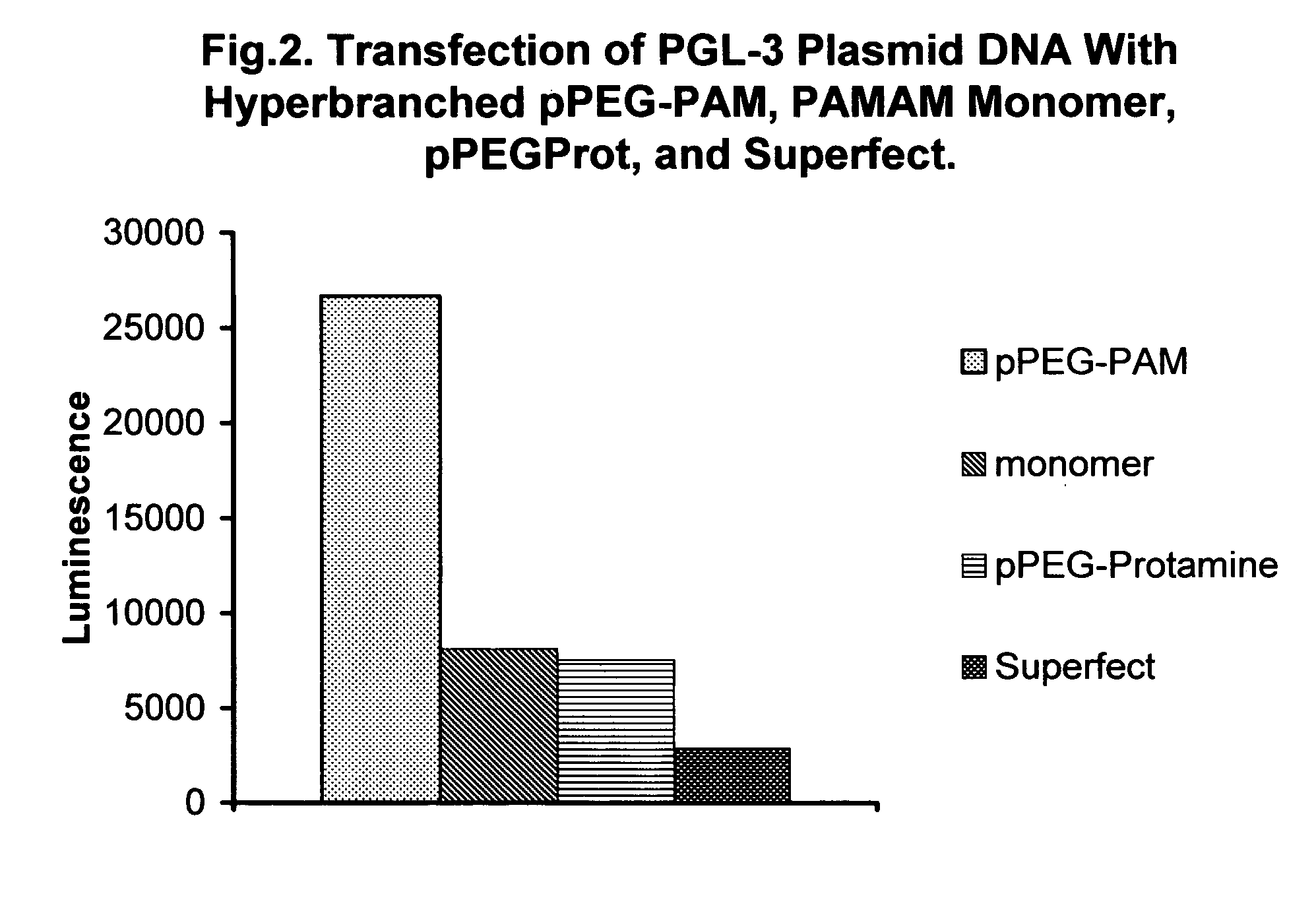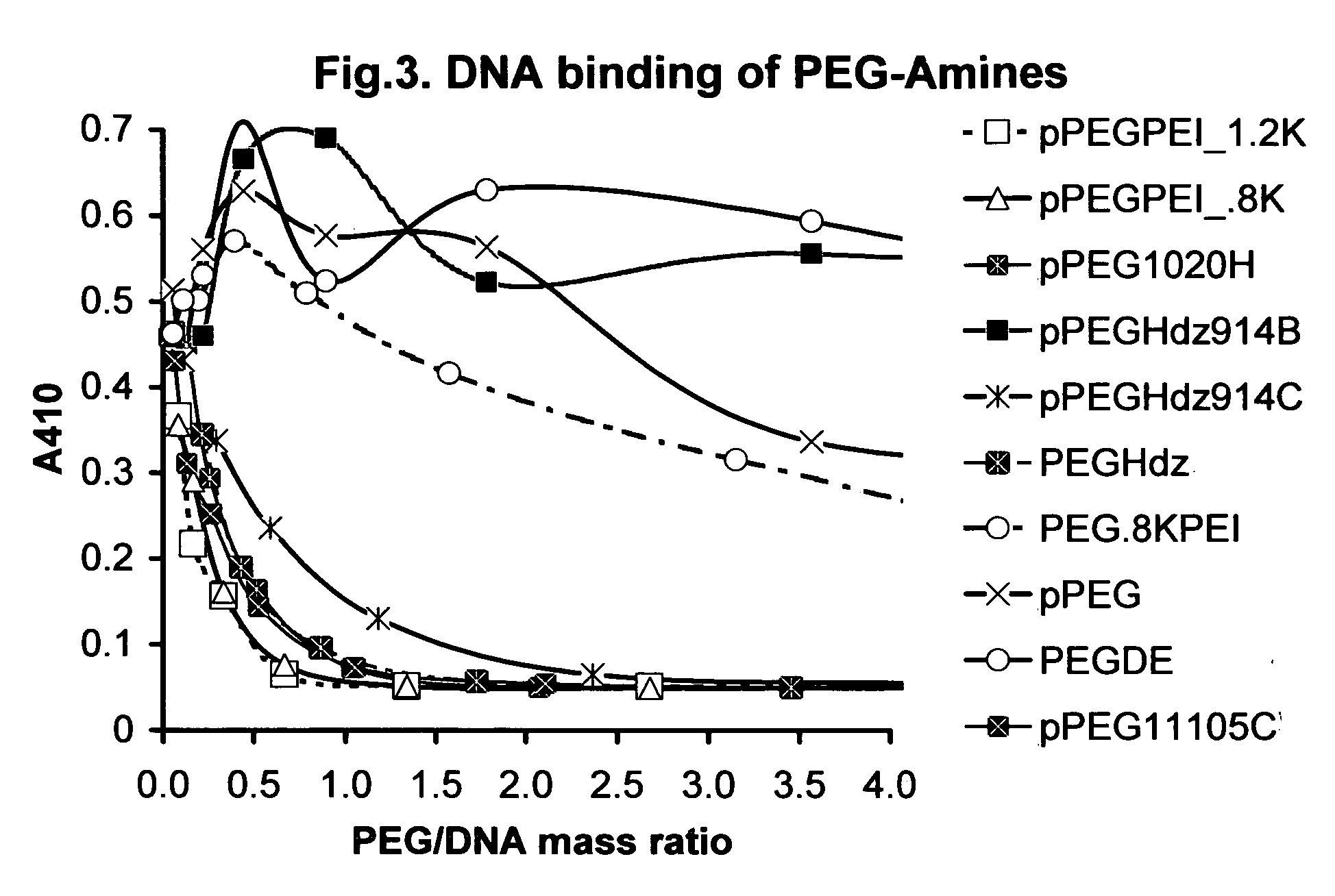Shielded micelles for polynucleotide delivery
a polynucleotide and micelle technology, applied in the direction of biocide, antibody medical ingredients, genetic material ingredients, etc., can solve the problems of difficult to deliver polynucleotides, poor bioavailability and uptake of polynucleotides into cells, and difficult to effectively deliver polynucleotides, etc., to achieve easy delivery of polynucleotides, less cytotoxic, and high-efficiency transfection agents
- Summary
- Abstract
- Description
- Claims
- Application Information
AI Technical Summary
Benefits of technology
Problems solved by technology
Method used
Image
Examples
example 1
[0146] Synthesis of pPEGHdz914A (pendant PEG-Hydrazine). Dissolved 0.25 g pendant propionic acid PEG (Sun Bio, 20K, 15 mol propionic acids / mol PEG) 0.0125 mmol in 2 ml H2O. After 5 min. added 0.12 ml of 3.18 mmol / ml hydrazine pH7.5, giving a 2×mol ratio to PEG propionic acids. After 10 minutes, added 71.6 mg EDC (191 g / mol) or 0.37 mmol to give 2×mol ratio to PEG propionic acids. After 1 hour the reaction formed a gel at which point 0.12 ml of Hdz and 4 ml of H2O was added and the solution was sonicated 10 min 40-50 C. producing a clear solution and final molar ratio of 4×Hdz and 2×EDC per propionic acid. Final pH was 5.5. Allowed rxn to continue 14 hours @25 C before purification. Added 10 ml 100% isopropyl to give 19 ml total volume, then transferred to 3K Pall™ spin filtration membrane and centrifuged 60 min. at 4800 rpm. The solutions were concentrated to 3-5 ml in 1 hour then water was added to give 20 ml total volume, and centrifugation was repeated. After 3 repetitions, the s...
example 2
[0147] Synthesis of pPEGHdz914B. Dissolved 0.25 g pPEG 0.0125 mmol into 5 ml H2O. After 5 min. added 20×mol ratio Hdz to propionic acids or 0.60 ml Hdz, 3.18 mmol / ml pH7.5. Let rxn stand for 10 min. then added 0.357 g 10×mol ratio EDC, 1.875 mmol, to produce a clear, pale yellow solution at pH 7.5. After 14 hours at 25 C, the reaction produced a partial polymerization, ˆb 10% of the total volume formed a gel. Purification was identical to the procedure used in pPEG HdzA.
example 3
[0148] Synthesis of pPEGHdz914C. Dissolved 0.25 g pPEG, 0.0125 mmol into 5 ml H2O. After 5 min, added 20×Hdz, 0.60 ml Hdz @3.18 mmol / ml, pH of Hdz 6.0. The pH of the solution was 4.0. After 10 min. added 10×EDC, 0.357 g, 1.87 mmol to give a final pH of 5.0. Reaction was continued for 14 hours prior to purification. Purification was identical to the procedure used in pPEG HdzA.
PUM
| Property | Measurement | Unit |
|---|---|---|
| mole ratio | aaaaa | aaaaa |
| weight:weight ratio | aaaaa | aaaaa |
| molecular weight | aaaaa | aaaaa |
Abstract
Description
Claims
Application Information
 Login to View More
Login to View More - R&D
- Intellectual Property
- Life Sciences
- Materials
- Tech Scout
- Unparalleled Data Quality
- Higher Quality Content
- 60% Fewer Hallucinations
Browse by: Latest US Patents, China's latest patents, Technical Efficacy Thesaurus, Application Domain, Technology Topic, Popular Technical Reports.
© 2025 PatSnap. All rights reserved.Legal|Privacy policy|Modern Slavery Act Transparency Statement|Sitemap|About US| Contact US: help@patsnap.com



